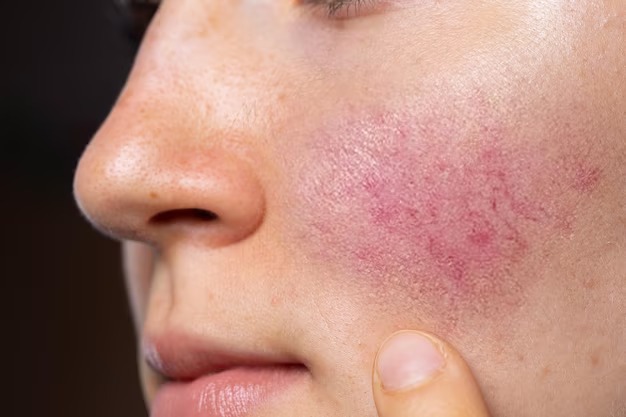Embark on a comprehensive journey with Lilium Skin Clinic’s expertly developed guide to understanding and managing rosacea. Characterised by persistent redness, visible capillaries, and sensitivity, rosacea is a chronic inflammatory skin condition influenced by genetic, vascular, and environmental factors. Our advanced treatment approach—featuring medical-grade skincare, laser therapies, and inflammation-reducing protocols—is thoughtfully designed to calm irritation, strengthen the skin barrier, and restore clarity, comfort, and a balanced complexion with clinical precision.
Rosacea

What is Rosacea?
Rosacea is a non-contagious skin inflammation that primarily affects the facial area. It is more common in individuals with Celtic heritage, and women are three times more likely to experience it than men. The condition can develop between the ages of 30 and 60 and is characterized by the dilation of surface capillaries, leading to a red flush, often accompanied by small pustules and lumps.
In severe cases, Rosacea can cause an enlarged nose, known as Rhinophyma. Although there are no official causes of Rosacea, a combination of hereditary and environmental factors can trigger and aggravate its symptoms.
Key Factors to Rosacea:
1. Genetic Predisposition
A family history of rosacea can increase your likelihood of developing the condition. Genetic factors play a role in the way your skin responds to various triggers
2. Abnormal Blood Vessel Function
Blood vessels in the skin of individuals with rosacea tend to dilate more easily and frequently. This can lead to persistent redness and flushing
3. Immune System Response
An overactive immune response in the skin can cause inflammation and trigger rosacea symptoms
4. Environmental Triggers
Triggers like sun exposure, hot or cold weather, spicy foods, alcohol, and certain skincare products can provoke or worsen rosacea flare-ups
5. Demodex Mites
These microscopic mites that naturally reside on the skin can be more numerous in individuals with rosacea. Their presence can contribute to inflammation and irritation
